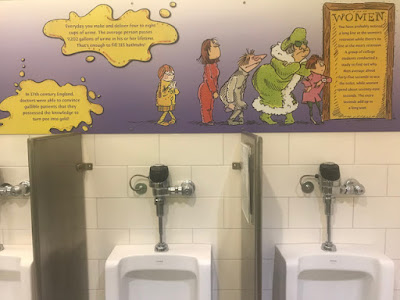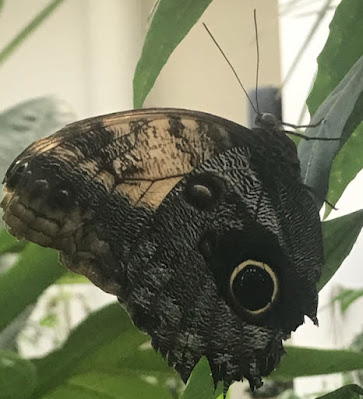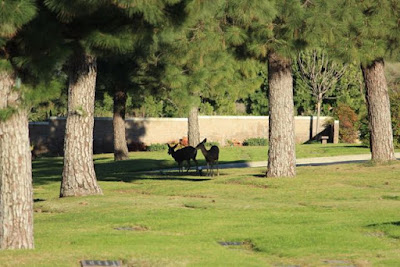The other day
I posted an LA Times list of science events or projects that would likely be in the news in 2019.
Science Magazine has also put out such a list. They didn't explain the order, so I took the liberty of grouping events under the same title (ie Climate Science) together. I also took as little as I could to post here, just what I thought was enough for readers to understand what they were talking about.
Go to the original form more details. Let's see where the two lists -
LA Times and
Science Magazine - overlap.
CLIMATE SCIENCE (LA Times talked about the many projects on Antarctica)
All eyes on polar ice
If you want to understand Earth's warming future, look to the poles. This year, scientists in two international projects will heed that call. In September, researchers will position a German icebreaker, the RV Polarstern, to freeze in Arctic sea ice for a year's stay. The ship will serve as the central hub for the €120 million Multidisciplinary drifting Observatory for the Study of Arctic Climate, hosting researchers from 17 countries.
CLIMATE SCIENCE
Solar dimming gets a test
A geoengineering technique to curb global warming by temporarily dimming the sun's rays could get its first, modest field experiment this year. In solar geoengineering, vast amounts of reflective aerosol particles would be sprayed into the high atmosphere, mimicking the cooling effects of volcanic eruptions.
SCIENCE POLICY
A science whisperer for Trump
For 2 years, President Donald Trump has been making decisions involving science and innovation without input from a White House science adviser. Meteorologist Kelvin Droegemeier, whom Trump nominated in late July 2018 to fill that void, was awaiting final Senate approval at press time. The question is what his arrival will mean for the administration's handling of an array of technical challenges, from regulation of human embryo engineering and self-driving cars to combatting cyberterrorism and fostering a more tech-savvy workforce.
SCIENCE POLICY
Divided we stand?
You'll need a Ouija board to predict how U.S. science will fare this year under a divided government, with Democrats now in control of the House of Representatives while Republicans retain the Senate with President Donald Trump in the White House. There are the known flashpoints—Democrats challenging the Trump administration on its environment and energy policies, for example.
PARTICLE PHYSICS
Seeking new physics in the muon
By studying the magnetism of a particle called the muon, physicists hope to find results this year that could point to new particles or forces, something they have craved for decades. Scientists at Fermi National Accelerator Laboratory (Fermilab) in Batavia, Illinois, are examining whether the muon—a heavier and shorter-lived cousin of the electron—is more magnetic than theory predicts.
BIOPHYSICS
A fine-grained look inside cells
In cell biology, higher resolution means more gets revealed. Now, scientists are ready to use new combinations of tools and techniques to provide close-up looks at components inside cells in unprecedented detail, and in 3D. Already, researchers can analyze DNA, proteins, RNA, and epigenetic marks in single cells. This year, multidisciplinary teams plan to combine those methods with advances in cryoelectron tomography, labeling techniques to trace molecules, and other types of microscopy to see subcellular structures and processes.
BIOTECHNOLOGY
New GM mosquitoes take off
The first release of genetically modified (GM) mosquitoes in Africa is set to happen in Burkina Faso this year, an initial step in a planned "gene drive" strategy against malaria. It will be the first release of GM mosquitoes of the genus Anopheles, which transmits the parasite responsible for the disease. The gene drive approach, under development at the nonprofit consortium Target Malaria, would spread mutations through the wild population that knock out key fertility genes or reduce the proportion of female insects, which transmit disease.
CONSERVATION
Nations size up biodiversity
Three years in the making, a $2.4 million assessment of Earth's biodiversity and ecosystems will be published in May. By evaluating trends over 50 years in indicators such as species extinctions and extent of marine protected areas, it will chart progress toward international goals on biodiversity conservation—and, in many places, how far short the world is falling.
SPACE SCIENCE (LA Times talks about New Horizon)
The next planetary mission
In July, NASA will chart its next major step in planetary science when it selects the next billion-dollar mission under its New Frontiers program. The agency will choose between two finalists. Dragonfly would send a semiautonomous quad-copter to fly across the surface of Titan, the saturnian moon sculpted by rivers of liquid methane. The copter would search for clues of chemical reactions that could lead to life. The Comet Astrobiology Exploration Sample Return mission would return gases and ice from the nucleus of the comet 67P/Churyumov-Gerasimenko.
RESEARCH ETHICS
A push to return museum holdings
Researchers are beginning new efforts to return bones and cultural artifacts collected for study and as museum specimens to the peoples from whom they were obtained, often without consent. Expect renewed debate on this issue, as after centuries of exploitative collecting, some researchers use new methods to collaborate with those communities, and also expand efforts to return objects of art.
#METOO (I'm grouping this with other ethics related ones)
New rights for alleged harassers
This year, the U.S. Department of Education may finalize controversial proposed rules that would reduce universities' liability for policing sexual harassment and sexual assault and give more rights to the accused. The regulations, proposed in November 2018, would change how institutions investigate such allegations under the landmark 1972 law known as Title IX. They wouldn't be responsible for investigating most off-campus incidents of harassment or assault, and the standard of evidence for confirming allegations of on-campus misconduct could rise.
BIOETHICS
China eyes bioethics overhaul (LA Times does cover this one)
China is likely to tighten its rules for genetic engineering of humans, including the creation of heritable traits, in the wake of an uproar over such work in 2018. A Chinese scientist named He Jiankui announced in November 2018 that he modified a gene in embryos that led to twin baby girls.
LIVESTOCK AGRICULTURE
Disease crisis looms for swine
Pig farmers—and perhaps some bacon lovers—will anxiously scan the headlines this year for news of African swine fever (ASF). Harmless to humans, the viral disease is highly infectious and lethal among pigs, causing serious economic damage through culls and trade bans.
Seems this one is more geared to scientists and the LA Times list toward a lay audience, which makes perfect sense.



















































